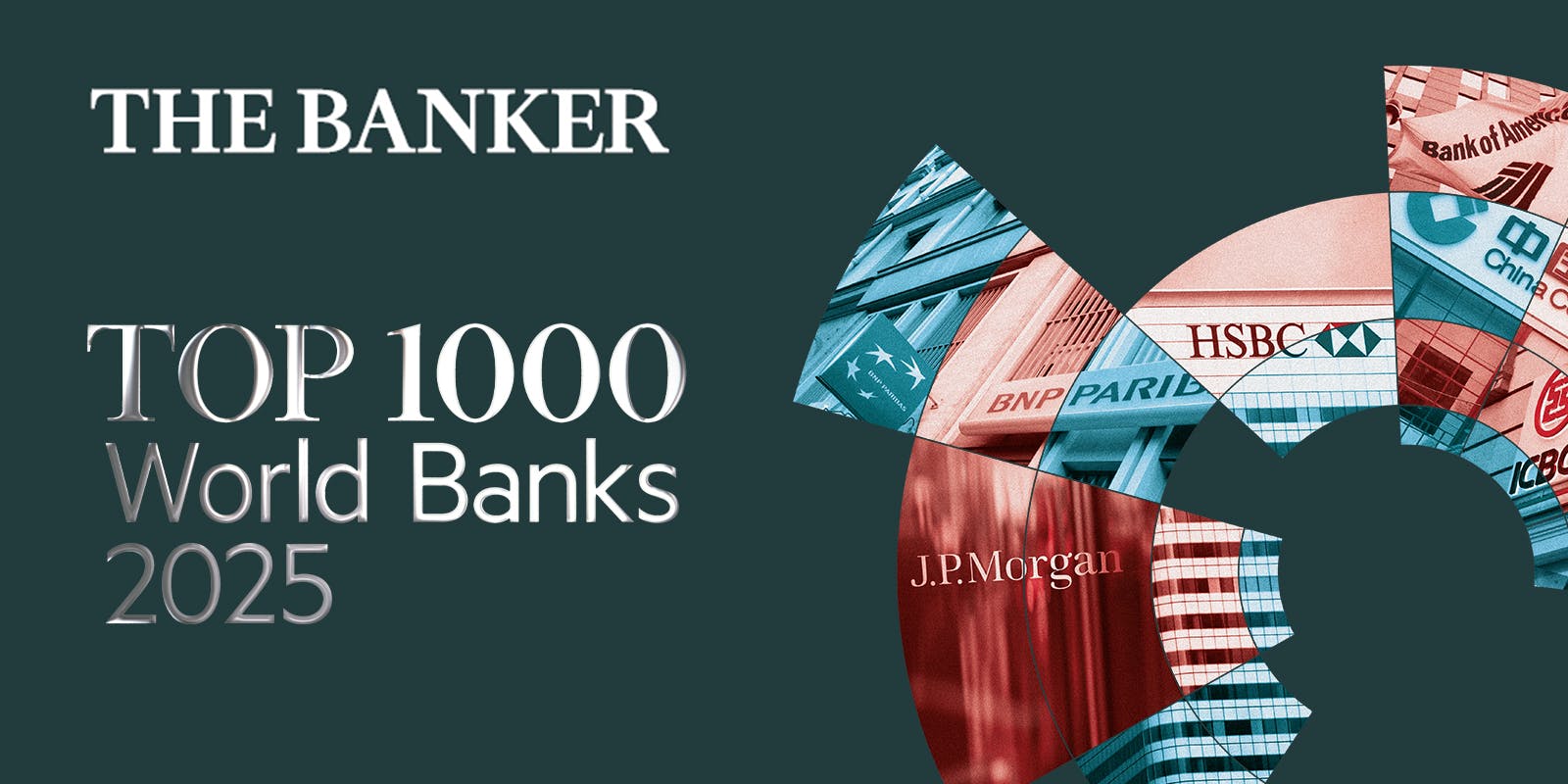
The Banker’s Top 1000 ranking, released today, shows a fragmented picture of the world’s largest lenders, with differences between banking markets resulting in dramatic regional polarisation.
Aggregate pre-tax profit growth for the world’s largest 1000 banks slowed from 14% in 2023 to just 3% in 2024. After benefiting strongly from a surge in net interest income in 2023, net interest income on aggregate was static across the global industry in 2024.
In contrast to a year ago, when high interest rates boosted prospects for banks across much of the world, the profitability picture and general outlook for banking is now increasingly fragmented. Profits are soaring in the US, and on Wall Street in particular, while Europe is stuck. In Asia, China — home to the world’s four largest lenders — continues to wobble.
US bank profits soar
The 2025 ranking shows that US lenders have bucked a global trend of falling profit growth on the back of lower interest rates and sluggish economic performance.
US investment banks in particular have benefited from a late-year surge in dealmaking and economic optimism surrounding the election of a perceived industry-friendly president.
JPMorgan, Citigroup, Morgan Stanley and Goldman Sachs all posted double digit pre-tax profit growth (in the case of Goldman, the change was by more than 70%). Their European competitors fared rather differently (as did Chinese banks).
Even including far smaller names than those on Wall Street, the average profitability of the US market is hard to miss. The 192 US lenders in this year’s ranking recorded a 17% aggregate increase in pre-tax profits for 2024, significantly higher than figures recorded across other major banking markets for the year.
Optimism about US banks largely carried over into 2025 despite the April shock of Donald Trump’s “reciprocal tariffs” and the unfolding trade wars, and stands in stark contrast to the economic uncertainty across other large markets.
Europe is stuck but Spanish profits grow
The data in this year’s rankings highlights the widening gap between US lenders (with profits surging by 17%) and their European counterparts, which continue to wrestle with weak domestic growth and slow reaction times.
In continental Europe, pre-tax profits grew the most in Spain (13.43%) with Banco Santander remaining in the ranking's Top 20. Spain is followed at a distance by France (3.3%) and the UK (2.84%). Meanwhile, Germany’s bank pre-tax profits decreased by 4.45%.
For the second year running, no British banks make the Top 10 list based on Tier 1 capital, with HSBC remaining at number 11. Mergers in the UK (including Barclay’s acquisition of Tesco Bank and Nationwide’s acquisition of Virgin Money) and the disappearance from the list of Ford Credit Europe Bank, the financial arm of Ford Motor Company, have meant that the total number of British banks in the global ranking has gone down to 22 from the previous 26.
China dominates but problems loom
Chinese banks continue to gain ground in the Top 1000 World Banks rankings in terms of asset and capital expansion, but their profitability remains hampered by a fragile economy, with the country’s protracted real estate crisis weighing on growth.
Combined, the US, Europe and China account for 41 of the largest 50 lenders in The Banker’s Top 1000 World Banks ranking.
“Our annual stock take of global banking shows a fragmented picture, with the US the most profitable among the largest banking markets, Europe stuck in a familiar economic slump and held back by political interference in bank mergers, and China — home to the world’s four largest lenders — facing a protracted real estate crisis,” said Silvia Pavoni, editor-in-chief of The Banker.
“The future of global banking may be far less global than anticipated only a few months ago, with international lenders increasingly focusing on a few key markets and growth prospects hampered by new geopolitical risks.”
For more information, please contact: pressoffice@ft.com
About The Banker
The Banker is a flagship publication of the Financial Times Group, providing economic and financial intelligence for banking professionals globally. Founded in 1926, The Banker has built a reputation for objective and incisive reporting. It has published the Top 1000 World Banks rankings for over five decades.
Silvia Pavoni is the editor in chief of The Banker. She joined the FT Group in 2005 and was most recently the founding editor of Sustainable Views, a service for sustainability professionals.
About the Financial Times Group
The FT Group, part of Nikkei Inc., includes the Financial Times and a number of other services that provide essential news and analysis for the global business community. The Financial Times is one of the world’s leading news organisations, recognised internationally for its authority, integrity and accuracy. The FT has a record paying readership of 1.5mn, while the wider FT Group has a global paying audience of 3mn across its portfolio of journalism, products and services.